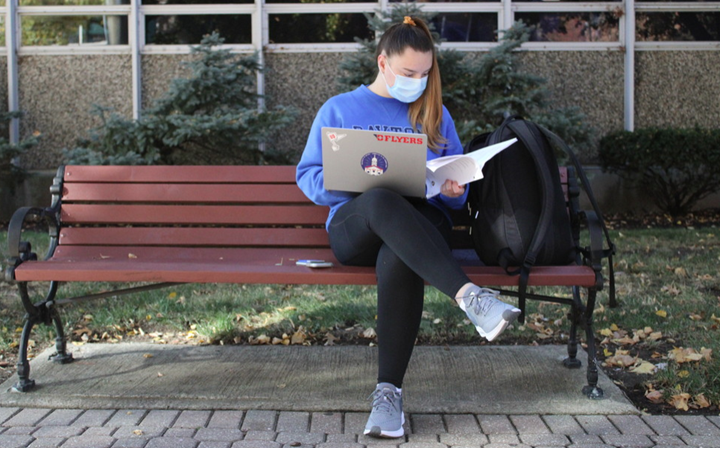Blogs

Planning For the First Two Weeks Online in Spring 2021
By Paul Dagnall
Is this the last semester that will be in COVID-mode? Hard to say, but regardless, the most important time in ANY semester is the beginning. As the instructor, you get one shot at that critical first impression. One shot to set the initial tone. Whether the semester is standard . . . or a little weird.
Step 1: Create Your Isidore Site(S)
Instructors are responsible for creating Isidore sites for their classes for the Spring 2021 semester. We have a thorough walkthrough with step-by-step instructions and video guides to assist you with this process.
In consultation with the Office of eLearning, the Provost Office has requested that that all Spring 2021 Isidore sites be made available to students on Thursday, January 14th at 8 AM. This is the same practice that was implemented ahead of the fall term. Opening sites early will help ensure that students are oriented to how each of their classes will run and will prepare them for a smooth first day.
- If you create your site after Jan. 14th at 8 AM, your site will most likely be "unpublished," or inaccessible to students until we automatically publish newly created Isidore sites on Tuesday, January 19th at 8 AM.
- If you need to unpublish your site, please watch this 2-minute video to learn more about managing Isidore site access.
You don't have to have everything in your Isidore site fully updated by the time the sites are made available to students on January 14th, but you should:
- Create a welcoming homepage using the Homepage Builder tool
- Post a detailed syllabus and course schedule
- Setup your Zoom meetings for the first two weeks of online classes
Step 2: understand how spring 2021 will be different
The Spring 2021 semester will be non-standard, but that’s okay. Non-standard is the new standard! As directed by the Provost’s Office, here’s what you need to know:
- The first two weeks of the term will be online (Jan. 19 - 29).
- In-person components of relevant courses will begin on February 1 if conditions permit.
- Graduate courses should follow the plans laid out by their chairs and program directors.
- Weekly synchronous office hours should also be provided and listed in your syllabus.
- For all blended courses, each student should have a minimum of one synchronous class per course each week.
- Students will be moving in to campus throughout the first two weeks of online classes. Some students may need to immediately move back home, and others may need to quarantine.
This last point is especially important. A quick scan of the FAQs about the Spring move-in will show you just how complex and stressful it will be for students to start the semester off right. To that end, we highly recommend the following during the first two weeks of classes:
- Students have been advised that they should communicate with instructors if they will need to miss class due to COVID-testing appointments and moving in. However, you should reiterate your expectations for how students should let you know that they may be absent.
- Record all Zoom class meetings so students who miss class can watch the recording when they are able to do so. Recorded Zoom lectures are also useful for review purposes for students.
- Do not give any tests or introduce large projects during the first two weeks. If necessary, only deliver low-stakes quizzes that students can take asynchronously (i.e. not during class time) if needed.
- Be flexible and gracious with your students, especially with regard to textbook orders and absences.
Step 3: COMMUNICATE WITH YOUR STUDENTS
One of the most common suggestions we heard from students in our Fall 2020 survey was that students greatly benefited from clear, regular communications from their instructors. It can be challenging to find the right balance of too much communication and too little, but we recommend the following:
- Send a "Welcome Email" ~2 weeks prior to the start of the semester. In this email:
- Remind students that classes will be held online via the Zoom tool in your Isidore site. Emphasize the specific date and time that you expect students to attend.
- Clarify your attendance expectations during the 2 weeks while students are moving in to campus.
- Attach a syllabus and course schedule.
- Welcome students to the class by using a personable tone or explaining why you're looking forward to teaching them.
- End with an invitation for them to reach out to you with any questions.
- Send a "First Day of Classes" email a few days prior to the start of the semester. In this email:
- Include most of the content from the first email.
- Explicitly tell students when they can access your Isidore sites and how to join the Zoom session.
- Send a "Transitioning to Blended Learning" email several days prior to your first in-person courses (not applicable to all classes). In this email:
- Detail when and how your students should be attending classes in-person and/or on Zoom.
- Remind students of classroom expectations, including wearing face masks, cleaning surfaces, and social distancing.
We have examples and further guidance about these communications (and more!) in our Spring 2021 Course Communication Guide.
The best laid plans of COVID-times can, of course, change at any time based on changing conditions, or recommendations or decisions by public health or other authorities. However, these following these 3 steps above should ensure a strong start to the semester no matter what happens.
We know this is a difficult time for both instructors and students. Please know that the Office of eLearning stands ready to assist in any way we can. Don't hesitate to reach out to us at elearning@udayton.edu or at 937-229-5039.
